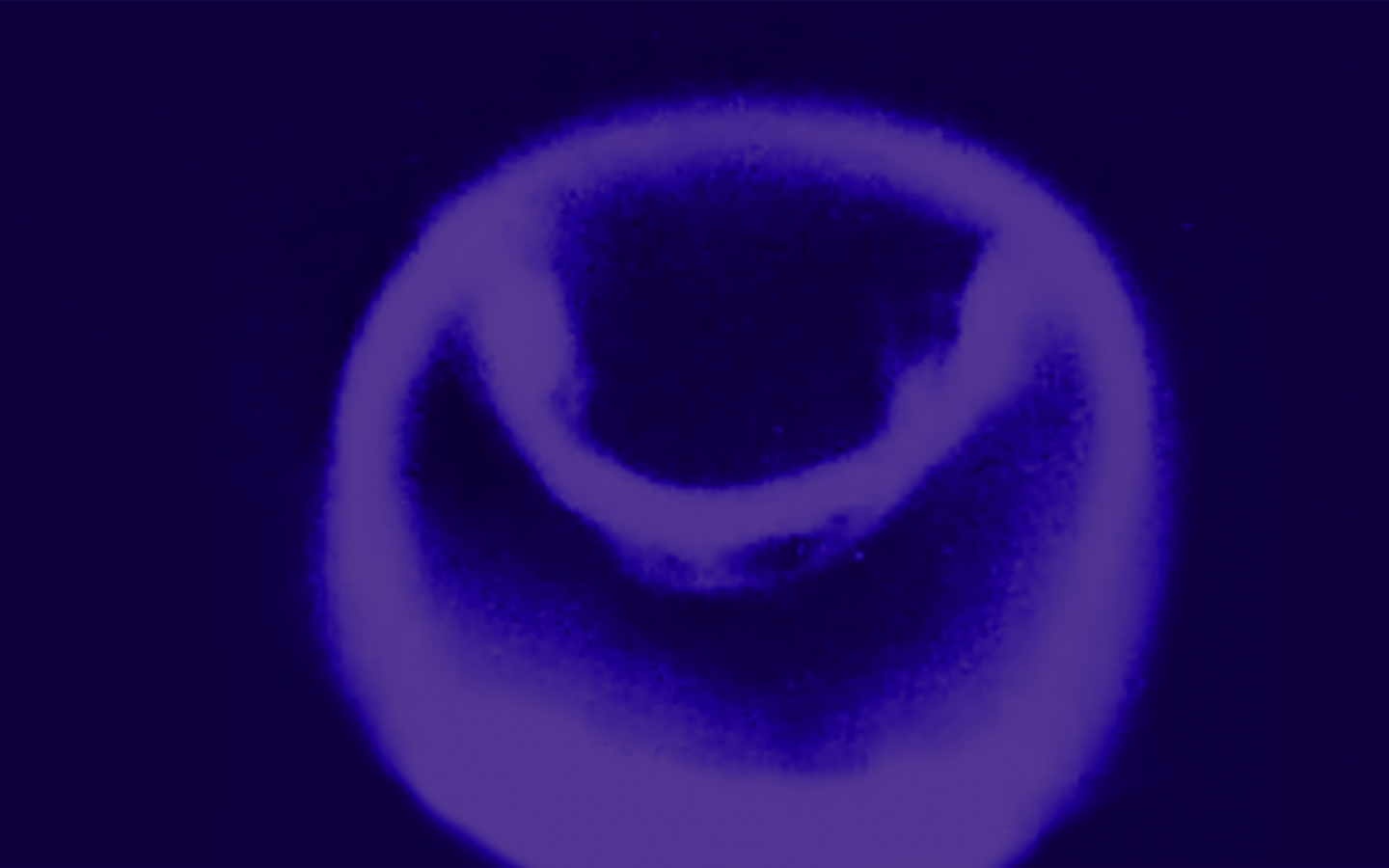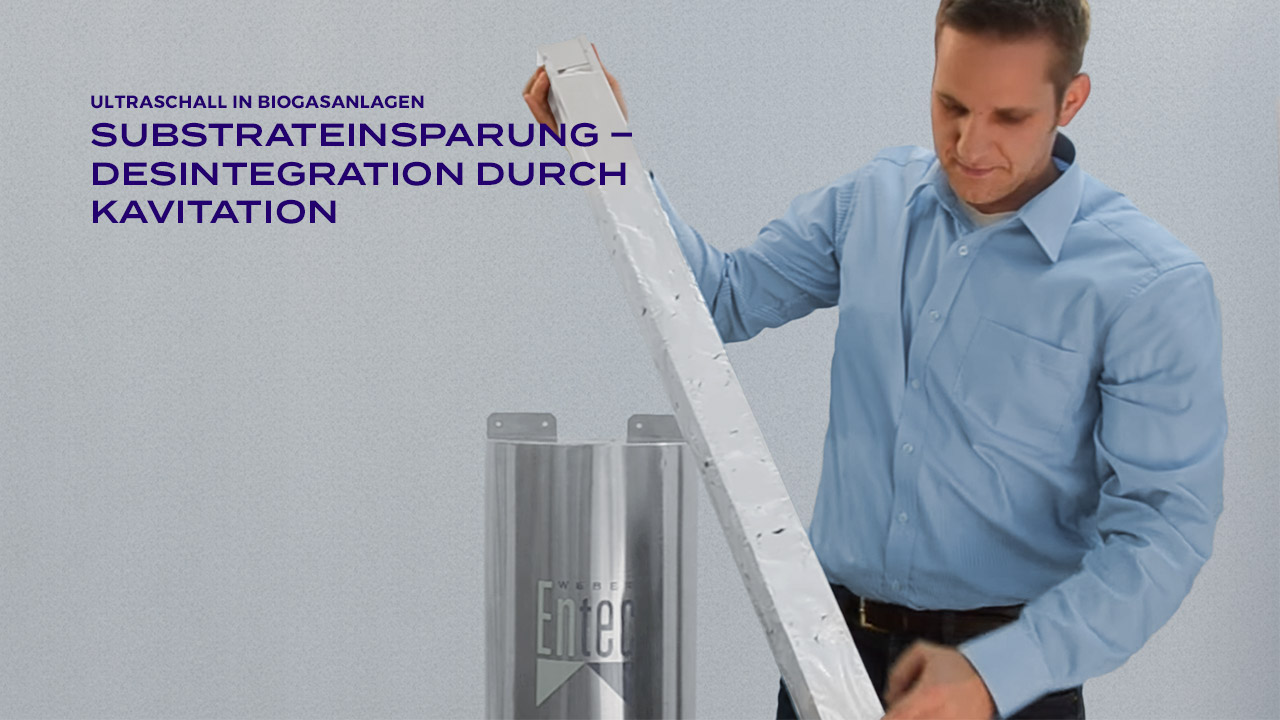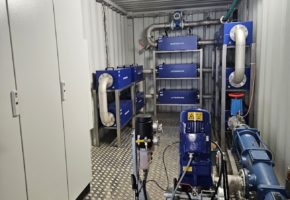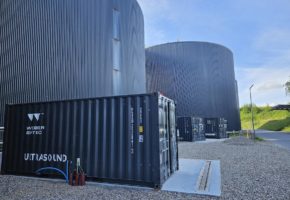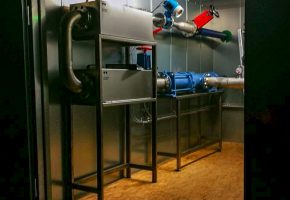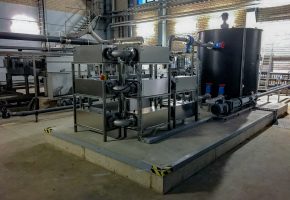resolving connections with vibrations
Ultrasound disintegration for biogas plants and WWTPs
Disintegration means the breakdown of biogenic sludge into minute particles by external forces. The resulting increase in surface area causes an acceleration of the organic breakdown process, and thereby results in an increased biogas yield.
In addition, the release of exo-enzymes from the external cell layer increases the enzyme activity in the digester.

Entec Newsflash

Biogas Power-ON
Meet us at Biogas Power-ON in Copenhagen. We present at the conference and a site visit is organized to one of our reference plants.

Business of Biogas
Meet us at Business of Biogas in St. Louis, MO.
Installation options for DesiUS
Delivered turnkey in containers or assembled directly on-site in intricate pump rooms - everything is possible. Our system can be delivered in both small 10" and larger 20" containers. The…
Our Bestseller – The turnkey containerized system
Our bestseller: the turnkey system, ready for immediate use. Simply connect the piping and plug in the power – it couldn't be quicker or more convenient. Fully assembled in our…

SIWW
We exhibit on the SIWW - Singapore International Water Week - Meet us at German Pavillion, B2-Q17

IFAT
We exhibit on the worlds largest environmental technology exhibition in Hall A2, booth 240
2-stage US plant
Feeding: 17 % corn 15 % solid cow manure 3 % grass 65 % liquid cow manure An ideal installation location for our ultrasound system was quickly…
Won tender about 28 kW US Plant at WWTP
Weber Entec won the tender for providing a sludge disintegration system for a WWTP in Lithuania. The Weber Entec ultrasound machine is installed since 2017 and equipped with 14…
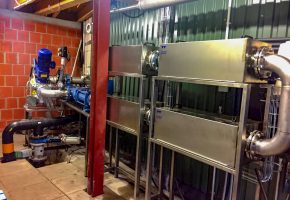
4-stufige US Anlage
Feeding: 48 % corn 21 % solide chicken manure 17 % sugar beets 7 % whole-crop silage 7 % solid cow manure
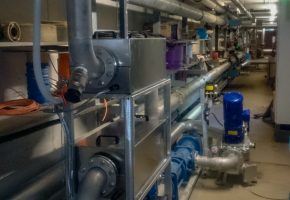
3-stufige US Anlage
Feeding: corn 38% whole-crop 19% grain corn 13% beets 30%

